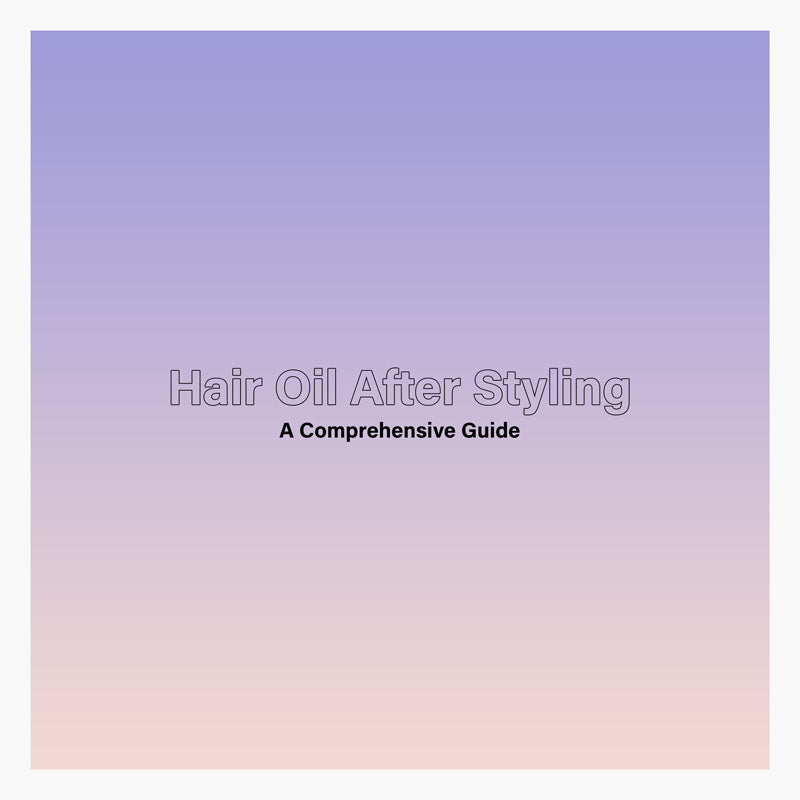Hair Oil After Styling: A Comprehensive Guide
Introduction
When it comes to hair care, hair oil often gets overlooked in favor of other styling products. However, using hair oil after styling can significantly impact yall health and appearance. This article will explore the benefits of using hair oil after styling, how to choose the right hair elixir oil, and the best way to apply it. So, let's dive in and learn how hair oil can elevate your styling game!
Benefits of Hair Oil After Styling
Moisture Retention
One of the primary reasons to use hair oil after styling is to help lock in moisture. Styling tools, such as flat irons and curling wands, can strip your hair of its natural moisture, leaving it dry and prone to breakage. Hair oil acts as a barrier, sealing in hydration and preventing moisture loss.
Frizz Control
Frizzy hair can be a real nuisance, especially after you've spent time perfecting your hairstyle. Hair oil can help tame frizz by smoothing the hair cuticle and reducing static electricity.
Shine and Smoothness
Who doesn't want shiny, smooth hair? Lightweight Hair oil can give your locks a lustrous, polished finish to make heads turn. It also helps to detangle your hair, making it easier to manage and style.
Damage Protection
Lastly, hair oil can protect against heat damage, UV rays, and environmental pollutants. By creating a protective layer around the hair shaft, hair oil can minimize the harmful effects of these elements on your tresses.
Choosing the Right Hair Oil
Hair Type Considerations
Not all hair oils are created equal. To find the best oil for your hair type, consider the following:
- For fine hair, opt for lightweight oils like argan, jojoba, or grapeseed oil.
- Heavier oils like coconut, olive, or castor oil may be more suitable for thick or coarse hair.
- Look for oils specifically formulated to protect and enhance color vibrancy for color-treated hair.
Ingredients to Look For
When choosing a Hair Oil For Moisturizing, pay attention to the ingredients. Opt for natural, high-quality oils free of sulfates, parabens, and synthetic fragrances. Some beneficial ingredients to look for include:
Argan oil: Rich in vitamin E and fatty acids, it nourishes and strengthens hair.
Coconut oil: Penetrates deep into the hair shaft to moisturize and prevent protein loss.
Camellia flower oil: Abundant in antioxidants and essential fatty acids, it restores shine, smoothness, and elasticity to the hair.
Jojoba oil: Closely resembles the natural oil produced by the scalp, making it an excellent moisturizer and conditioner.
Avocado oil: High in vitamins A, D, and E, it helps to repair and strengthen hair.
Sweet almond oil: Rich in vitamins and minerals, it promotes hair growth and reduces breakage.
How to Apply Hair Oil After Styling
Precautions
Before applying hair oil, make sure your hair is clean and dry. Applying oil to dirty or damp hair may reduce its effectiveness. Also, use only a tiny amount of oil to avoid weighing your hair down or making it look greasy.
Step-by-Step Guide
Start by dispensing a small amount of oil onto your fingertips or the palm of your hand. Depending on your hair length and thickness, you may need to adjust the quantity.
Rub your hands to warm the oil and spread it evenly across your fingers.
Begin applying the oil to the ends of your hair, working your way up toward the mid-lengths. Focus on the areas that tend to be the driest or most damaged.
Avoid applying the oil directly to the roots, as this can make your hair appear greasy.
Comb your fingers through your hair to ensure even distribution.
Style your hair as desired, and enjoy the benefits of your post-styling hair oil treatment!
Common Mistakes to Avoid
Applying too much oil: A little goes a long way! Overdoing it can weigh your hair down or make it look greasy.
Neglecting the ends: The ends of your hair are the oldest and most susceptible to damage, so make sure to give them some extra attention.
Using the wrong oil for your hair type: Choose an oil that suits your hair's unique needs to achieve the best results.
Incorporating Hair Oil into Your Styling Routine
Try incorporating it into your regular styling routine to make the most of hair oil. For example, use it as a pre-styling treatment to protect your hair from heat or as a finishing touch to add shine and control frizz. You can also experiment with oil-infused styling products, such as serums, creams, and sprays, to find the perfect combination for your hair type.
Conclusion
In conclusion, hair oil can be a game-changer in maintaining healthy, beautiful hair after styling. By selecting the right oil for your hair type and applying it correctly, you can enjoy numerous benefits, including moisture retention, frizz control, shine, and damage protection. So give hair oil a try, and watch your hair transform!
Frequently Asked Questions
Q: Can I use hair oil on wet hair?
A: While it's best to apply hair oil to dry hair after styling, some oils can also be used on damp hair as a pre-styling treatment to protect against heat damage.
Q: How often should I use hair oil?
A: This varies depending on your hair type and needs. Start with once or twice a week, and adjust the frequency based on how your hair responds.
Q: Can I use hair oil if I have oily hair?
A: You can still use hair oil if you have oily hair. Choose a lightweight oil, like jojoba or argan oil, and apply it sparingly to the ends and mid-lengths of your hair to avoid adding excess fat to your roots.
Q: Do I need to wash my hair after applying hair oil?
A: Generally, washing your hair after applying hair oil is unnecessary, as it is meant to be left in. However, if you accidentally use too much and your hair looks greasy, you may want to wash your hair to remove the excess oil.
Q: Can I use hair oil on color-treated hair?
A: Absolutely! Using hair oil on color-treated hair can help to maintain color vibrancy and prevent fading. Look for oils specifically formulated for color-treated hair or those with natural, gentle ingredients.

